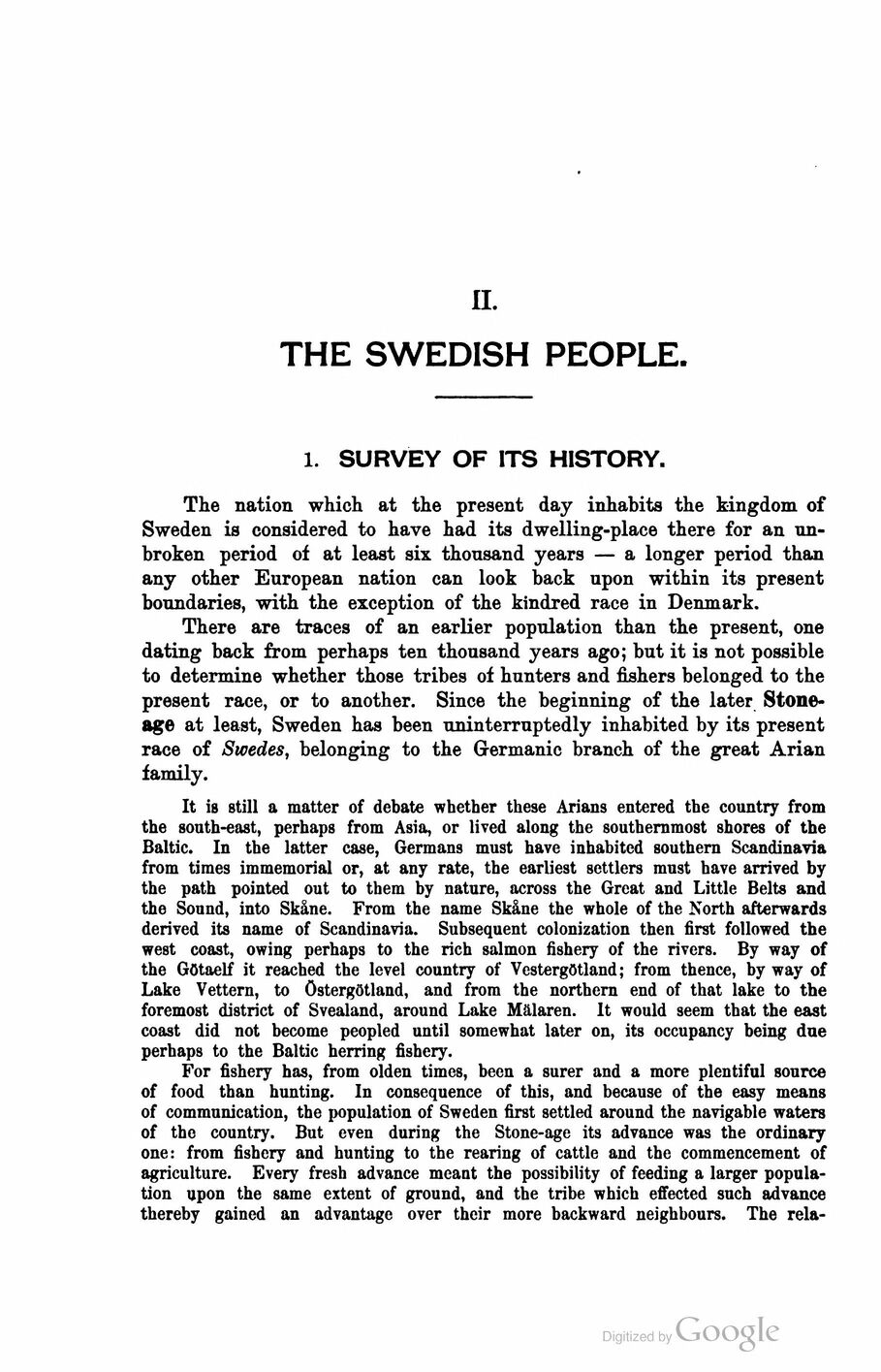
Full resolution (JPEG) - On this page / på denna sida - First part - II. The Swedish People - 1. Survey of its History. By E. Svensén, Author, Stockholm

<< prev. page << föreg. sida << >> nästa sida >> next page >>
Below is the raw OCR text
from the above scanned image.
Do you see an error? Proofread the page now!
Här nedan syns maskintolkade texten från faksimilbilden ovan.
Ser du något fel? Korrekturläs sidan nu!
This page has never been proofread. / Denna sida har aldrig korrekturlästs.
IL
THE SWEDISH PEOPLE.
1. SURVEY OF ITS HISTORY.
The nation which at the present day inhabits the kingdom of
Sweden is considered to have had its dwelling-place there for an
unbroken period of at least six thousand years — a longer period than
any other European nation can look back upon within its present
boundaries, with the exception of the kindred race in Denmark.
There are traces of an earlier population than the present, one
dating back from perhaps ten thousand years ago; but it is not possible
to determine whether those tribes of hunters and fishers belonged to the
present race, or to another. Since the beginning of the later
Stone-age at least, Sweden has been uninterruptedly inhabited by its present
race of Swedes, belonging to the Germanic branch of the great Arian
family.
It is still a matter of debate whether these Arians entered the country from
the south-east, perhaps from Asia, or lived along the southernmost shores of the
Baltic. In the latter case, Germans must have inhabited southern Scandinavia
from times immemorial or, at any rate, the earliest settlers must have arrived by
the path pointed out to them by nature, across the Great and Little Belts and
the Sound, into Skåne. From the name Skåne the whole of the North afterwards
derived its name of Scandinavia. Subsequent colonization then first followed the
west coast, owing perhaps to the rich salmon fishery of the rivers. By way of
the Götaelf it reached the level country of Vestergötland; from thence, by way of
Lake Vettern, to Östergötland, and from the northern end of that lake to the
foremost district of Svealand, around Lake Mälaren. It would seem that the east
coast did not become peopled until somewhat later on, its occupancy being due
perhaps to the Baltic herring fishery.
For fishery has, from olden times, been a surer and a more plentiful source
of food than hunting. In consequence of this, and because of the easy means
of communication, the population of Sweden first settled around the navigable waters
of the country. But even during the Stone-age its advance was the ordinary
one: from fishery and hunting to the rearing of cattle and the commencement of
agriculture. Every fresh advance meant the possibility of feeding a larger
population upon the same extent of ground, and the tribe which effected such advance
thereby gained an advantage over their more backward neighbours. The rela-
<< prev. page << föreg. sida << >> nästa sida >> next page >>